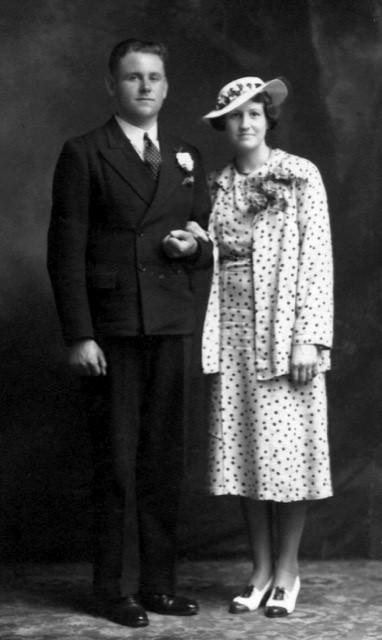
Wedding Photographs
SINCE the invention of Photography in the 1850’s, photographs quickly became an essential part of our Culture.
Initially expensive, photography became cheaper and more accessible as time went on and with the advent of more portable equipment, photography stopped being mostly a studio bound process and important milestones such as weddings and anniversaries started to be captured firstly on glass plates and later, film.
Funerals were also a subject for photographic record, but this seems to have petered out in the 1920’s.
The Standard continued to publish pictures of the deceased but not actual funerals.
From the 1950’s, Ciren had about four or five freelance photographers covering events in town and supplying the Standard with pictures; including local weddings.

My Uncle Fred Heaven was one of the Ciren photographers and was widely known for not just for wedding photography, but also for his studio portraits of babies and children.
Back then, most people got married on a Saturday and it was unusual for a wedding to take place on a week day, unless it was at the Ciren Register Office which until the 1970’s was at No 12 Park Street opposite the Museum.
This made it possible for people to attend weddings without taking a day off work and for people like my Uncle Fred, to have also have “Day job” as well as his Photography.

Each Saturday, my Uncle would go from one wedding to another, bobbing back and forth between the town’s churches, taking pictures at each, as successive brides stepped out of the church under a hail of confetti.
The next day would be spent, and probably most of the next week, developing and processing the photos in his darkroom at the back of the garages on the Chesterton Estate.
In those days, photos were mainly black and white - colour pictures being a bit of an expensive luxury for Ciren Brides.


Comments: Our rules
We want our comments to be a lively and valuable part of our community - a place where readers can debate and engage with the most important local issues. The ability to comment on our stories is a privilege, not a right, however, and that privilege may be withdrawn if it is abused or misused.
Please report any comments that break our rules.
Read the rules here